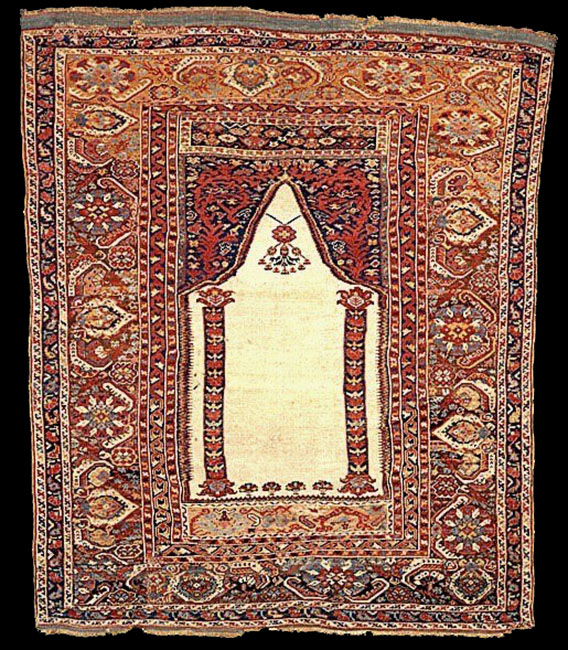This small prayer rug, 4.10x3.10 feet, was woven in the late 17th
century. Another 17th century example with the rare white mihrab is in
the Iparmuveszeti Museum in Budapest, and others are in Transylvania
where they were imported from Anatiolia in the 17th and 18th centuries
for use in Saxon churches. Many sources identify this design as being
from the Gordes region of Turkey. And indeed many carpets were made
there with this design. However, the weaving structure and wide range
of dyes in this piece, including an oxidized dark brown not normally
seen in Gordes rugs, indicate a center of weaving more likely in the
Ushak region, near Gordes. Many rugs from Ushak were exported to
Transylvania and this is likely one of them. Published and exhibited:
Prayer Rugs from Private Collections, plate 3, p. 9, The Textile
Museum, Washington, DC, 1974.
Dennis Dodds Collection
http://www.maqam-rugs.com/
|

